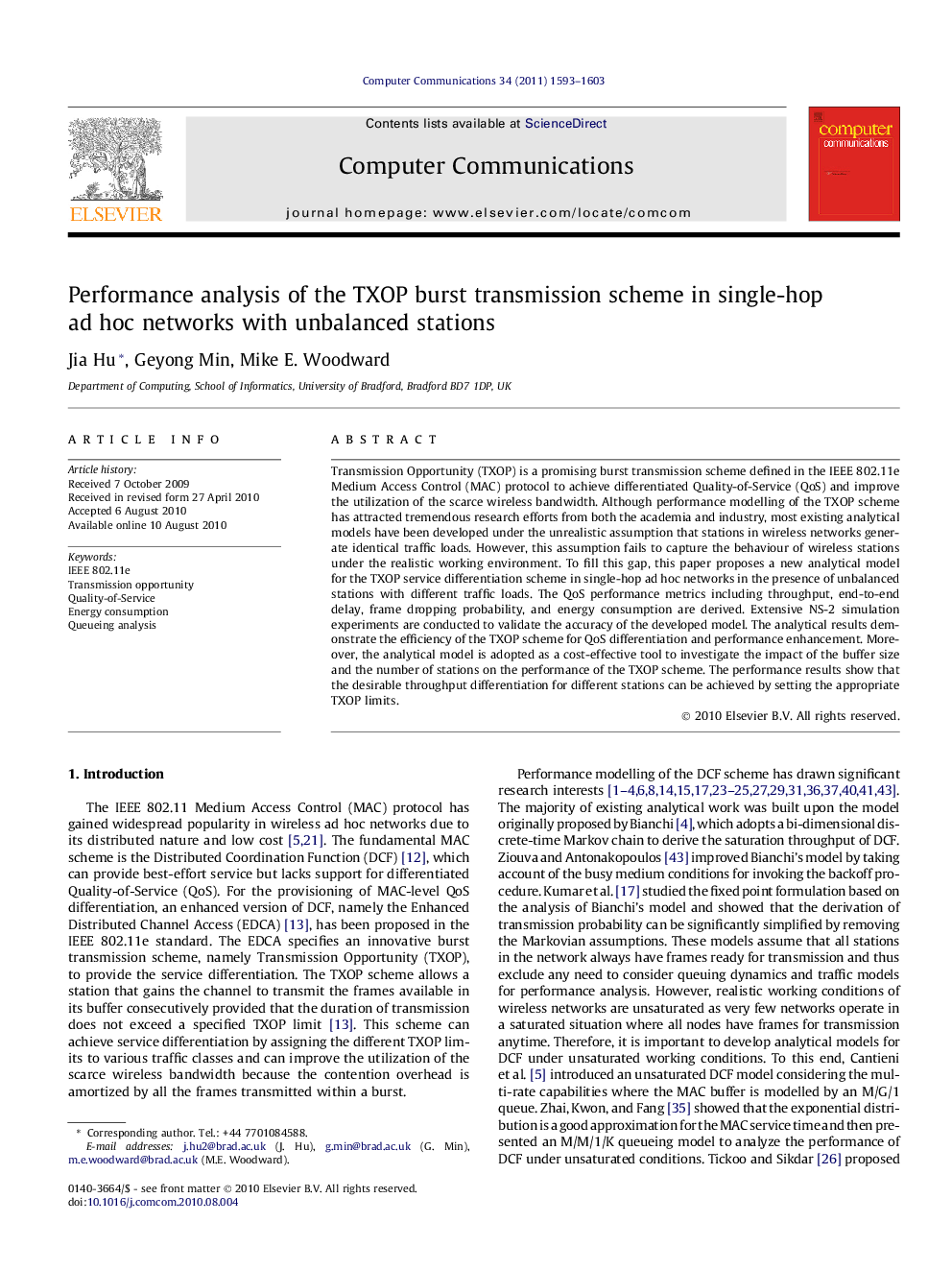| Article ID | Journal | Published Year | Pages | File Type |
|---|---|---|---|---|
| 448132 | Computer Communications | 2011 | 11 Pages |
Transmission Opportunity (TXOP) is a promising burst transmission scheme defined in the IEEE 802.11e Medium Access Control (MAC) protocol to achieve differentiated Quality-of-Service (QoS) and improve the utilization of the scarce wireless bandwidth. Although performance modelling of the TXOP scheme has attracted tremendous research efforts from both the academia and industry, most existing analytical models have been developed under the unrealistic assumption that stations in wireless networks generate identical traffic loads. However, this assumption fails to capture the behaviour of wireless stations under the realistic working environment. To fill this gap, this paper proposes a new analytical model for the TXOP service differentiation scheme in single-hop ad hoc networks in the presence of unbalanced stations with different traffic loads. The QoS performance metrics including throughput, end-to-end delay, frame dropping probability, and energy consumption are derived. Extensive NS-2 simulation experiments are conducted to validate the accuracy of the developed model. The analytical results demonstrate the efficiency of the TXOP scheme for QoS differentiation and performance enhancement. Moreover, the analytical model is adopted as a cost-effective tool to investigate the impact of the buffer size and the number of stations on the performance of the TXOP scheme. The performance results show that the desirable throughput differentiation for different stations can be achieved by setting the appropriate TXOP limits.
